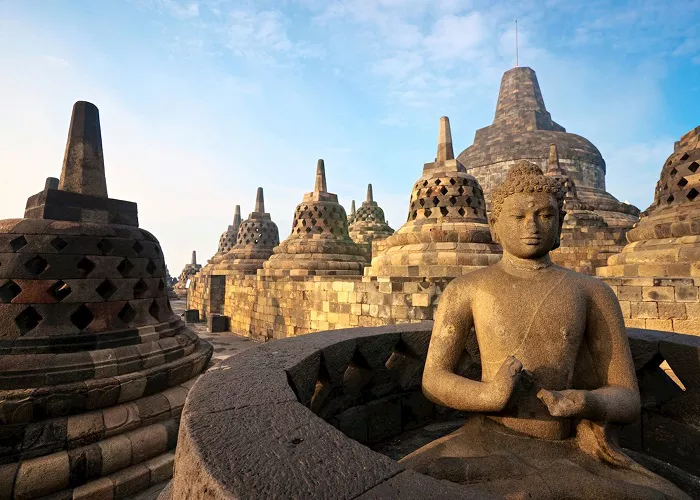JAKARTA — The recent installation of a stairlift at Borobudur Temple, a UNESCO World Heritage site, has sparked criticism from cultural heritage experts for being carried out without a Heritage Impact Assessment (HIA) or adherence to established conservation procedures.
The portable stairlift, installed to facilitate the visit of Indonesian President Prabowo Subianto and French President Emmanuel Macron on May 29, 2025, was discussed during an online forum hosted by the Indonesian Archaeological Experts Association (IAAI) on June 17. The discussion, titled “Heritage Impact Assessment (HIA) in the Utilization of World Heritage,” brought attention to the growing tension between development and heritage preservation at culturally significant sites.
Marsis Sutopo, archaeologist and General Chairman of the IAAI, highlighted the lack of coordination between developers and conservators. “The problem we face as conservators is that users often act quickly, while conservators must move cautiously and carefully,” Sutopo said. He emphasized that any structural modification to a heritage site, such as the installation of a stairlift, requires comprehensive analysis, including studies on potential impacts and mitigation strategies, prior to implementation.
Echoing these concerns, archaeologist and cultural heritage advocate Daud Aris Tanudirjo questioned the absence of a Cultural Heritage Impact Assessment (CHIA)—an instrument akin to an Environmental Impact Assessment (EIA) but tailored to heritage conservation. “These regulations seem to be disregarded in favor of expediency,” said Tanudirjo, who also serves as Chairman of the Council for the Preservation of Cultural Heritage in Yogyakarta.
Tanudirjo warned that without proper feasibility studies, initiatives risk being superficial attempts at sustainable development. “Many regulations exist only as documents—like spatial plans—but are not genuinely implemented,” he said. He clarified that the HIA is not meant to obstruct development, but to guide it responsibly through informed planning.
“The purpose of an HIA is to recognize and evaluate potential impacts arising from development activities and to determine mitigation measures to reduce or eliminate those impacts,” he explained.
Tanudirjo also identified key factors influencing the success or failure of heritage preservation, including natural disasters, environmental processes, inadequate conservation policy, and unregulated development. He stressed the importance of managing these risks through consistent, scientifically grounded heritage planning.
The controversy serves as a reminder of the delicate balance between accessibility, tourism, and conservation at historical sites. As discussions continue, stakeholders are urging for stricter adherence to international standards and assessments to protect Indonesia’s cultural heritage for future generations.

